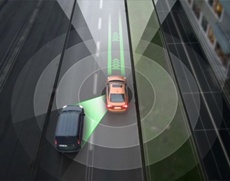Volvo to trial self-driving cars on Swedish streets by 2017
02 Mar 2015
Volvo Cars' Drive Me pilot programme, announced last week is set to push autonomous driving a step closer to reality with 100 self-driving XC90 cars running on Swedish streets by 2017, autonews.com reported.
 The vehicles would be driven by ordinary people in Volvo's home city of Gothenburg on a controlled 31-mile route. They would be used for daily road commuting with a barrier between the lanes and operate "in real traffic in a real situation," the company said.
The vehicles would be driven by ordinary people in Volvo's home city of Gothenburg on a controlled 31-mile route. They would be used for daily road commuting with a barrier between the lanes and operate "in real traffic in a real situation," the company said.
The trial would continue until the spring of 2019.
According to Peter Mertens, senior vice president of R&D at Volvo Car Group, the company was entering uncharted territory in the field of autonomous driving.
He added, taking the exciting step to a public pilot, with the ambition to enable ordinary people to sit behind the wheel in normal traffic on public roads, had never been done before.
The autonomous vehicles would use a network of sensors, cloud-based positioning systems and intelligent braking and steering technologies in addition to a new Volvo autopilot system that allowed the vehicle to take over steering, turning, braking and parking.
According to Volvo, the trial would run on specific public roadways "without oncoming traffic, cyclists and pedestrians".
Meanwhile, PC World reported that car technology had taken giant steps since Google first showed off an autonomous vehicle in 2010, but car makers were still working on cars that were truly self-driving and could get from point A to B without much human interaction.
When set on Autopilot, the car would drive itself, presumably leaving the driver to attend to other tasks, read a book, respond to emails, and eat breakfast on the morning commute.
According to Mertens, drivers would be able to switch to active driving. He added the car transformed everyday commuting from lost time to quality time, opening up new opportunities for work and pleasure.
However, there was still work to be done and the biggest challenge was to get the car to respond to unexpected real-world scenarios like pedestrians, items in the road, or other cars that cut you off.
Volvo would therefore, initially test its vehicles on select roads with suitable conditions, like no oncoming traffic, cyclists, or pedestrians.
"It is relatively easy to build and demonstrate a self-driving concept vehicle, but if you want to create an impact in the real world, you have to design and produce a complete system that will be safe, robust, and affordable for ordinary customers," said Erik Coelingh, Volvo technical specialist.
The system would therefore, include back-up systems, which would take over in the unlikely event of a brake failure, for example.
"Making this complex system 99 per cent reliable is not good enough. You need to get much closer to 100 per cent before you can let self-driving cars mix with other road users in real-life traffic," Coelingh said.






























